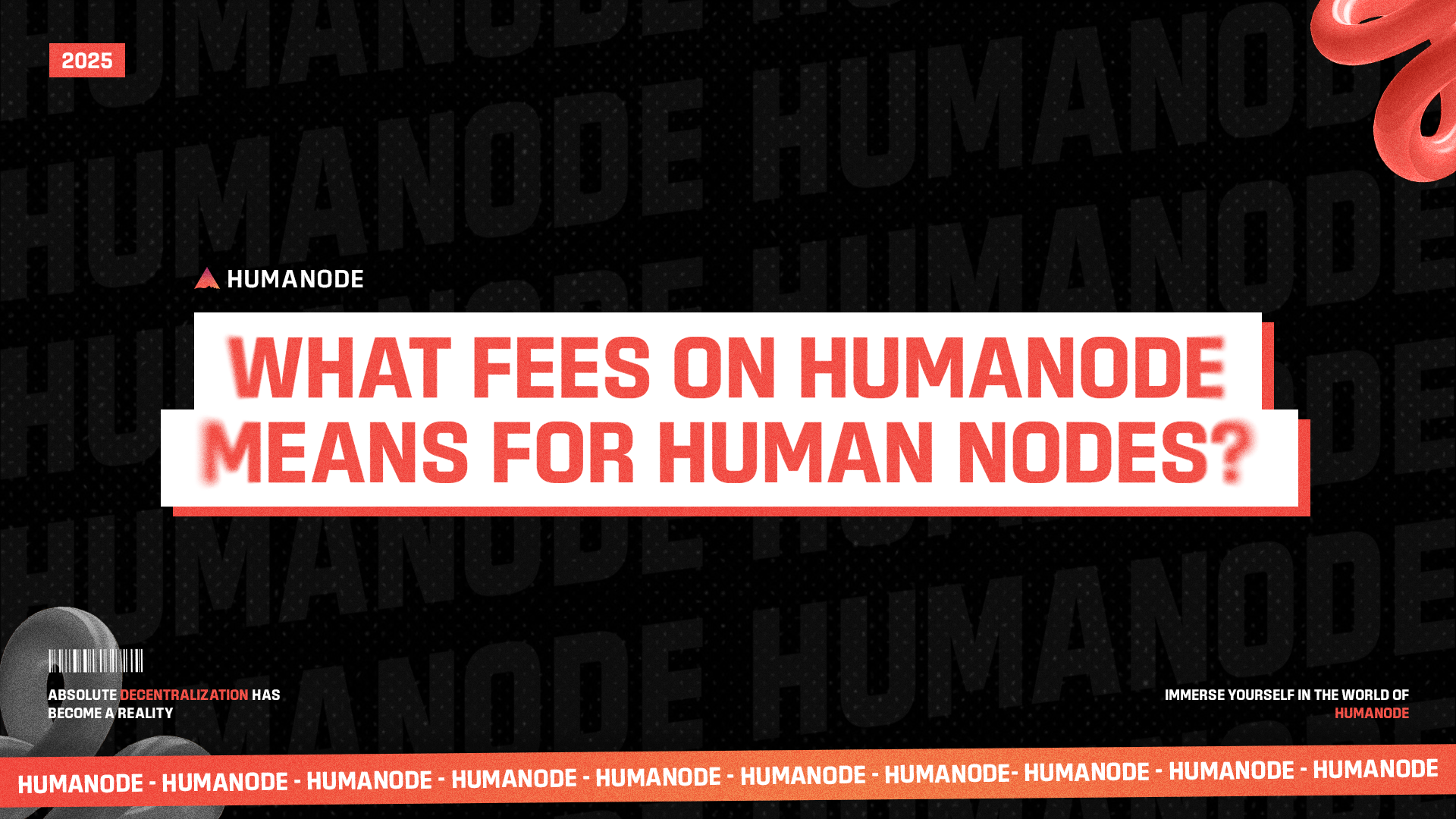What fees on Humanode mean for human nodes?

Whenever we send a transaction on a chain, we pay a fee. Most people accept that as a small cost of using the technology. But if we stop and ask where those fees actually go, the answer tells us who the system is truly built for.
On the major chains we know well, fees mostly flow to those with the greatest ability to pay to begin with. The biggest stakers earn the most rewards. The validators with the strongest hardware gain more control. The more someone already has, the more they receive. These systems rely on capital to secure the network, but that also means decentralization only exists within the boundaries of wealth.
Humanode doesn’t follow that pattern. Here, a validator is a real person, a unique human being who proves their existence instead of what resources they have. And when transactions occur, the fees earned by the network are shared equally across all human nodes. If you help secure this chain, you receive the same slice of the pie as anyone else. Not because you bought influence, but because you are a unique human.
That changes the role of fees entirely. Instead of reinforcing those at the top, fees here help more people participate and remain active on Humanode. A validator in Ghana or Pakistan or Argentina doesn’t need a fortune or a server farm to contribute. Their participation is what gives this chain its security and its legitimacy.
As activity on Humanode grows, as someone transacts, plays a game, verifies uniqueness, or deploys a smart contract, the pie grows. And every time the pie grows, we can add more seats to the table. More validators. More human beings participating in consensus. Decentralization becomes something we can measure directly in people.
This is the inverse of the traditional pattern. On most networks, adoption strengthens the same group of operators. On Humanode, adoption increases the number of people who share responsibility and benefit from securing the chain.
Now imagine that Humanode one day handled the same economic volume as top blockchains. Millions in daily fees flow through Ethereum, Solana, and BNB Chain. On those networks, wealth loops back to wealth.
But imagine even a fraction of that activity flowing into Humanode, where every human receives the same slice of the pie. We could support thousands more validators across the world. We could make the most decentralized network on Earth not just by ideal, but by visible numbers of real human beings involved.
But the real question that we keep asking is: Where do those fees come from? They come from usage that is already emerging.
Biostaker brings real liquidity on-chain, and every action taken there generates a share of fees. Biomapper allows Web3 projects to verify users as real humans, a service that triggers a Humanode fee for every verification. With over 2.2 million biometric verifications already completed through BotBasher, even a fraction of those actions involving micro-fees would create sustained validator income.
Projects like Catacomb Crawlers push this further. Catacomb Crawlers is the first major title where the on-chain economy runs on Humanode, not as a gimmick but because it solves a real botting problem. A single in-game trade from a single player may only produce cents, but a million players making those trades daily is serious network activity. Axie Infinity processed over 10 million marketplace transactions in its early surge. Apply even a conservative fee model to those numbers, and Humanode validators would be earning enough to support ten times the current count of human nodes.
As more useful things are built on Humanode, whether it’s a marketplace, a lending tool, governance dApps, or anything people interact with, every action inside those applications generates fees that flow directly to human validators. Builder success = decentralization success. That alignment is rare.
Imagine that one day Humanode reaches fee levels comparable to the largest chains. Millions in daily volume, fees that, elsewhere, reinforce plutocracy, would here translate into more people running nodes and more equal voices in governance. That is decentralization you can point to.
More activity → more fees → more validators → more decentralization → more trust → more activity.
And because fees remain with the people who secure Humanode, this growth strengthens everyone who is already here and everyone who joins after.
We do not need a million users by tomorrow. Meaningful progress takes time. Some days we will see more transactions, some days fewer. But the mechanics ensure that success expands participation instead of shrinking it. When the chain becomes busier, the validator set does not consolidate; it grows.
Every transaction adds resilience.Every validator added makes decentralization real.Every new builder who chooses Humanode expands the pie for everyone else.
If Humanode thrives, it’s because many humans brought life and motion to the chain. Not because a few wealthy players decided to keep it alive.
And that is what fees mean here:Human activity becomes human power.Human power becomes human governance.And human governance becomes the decentralization that blockchains have always promised.
We are building this step by step, block by block, person by person.Humanode grows when we use it.

